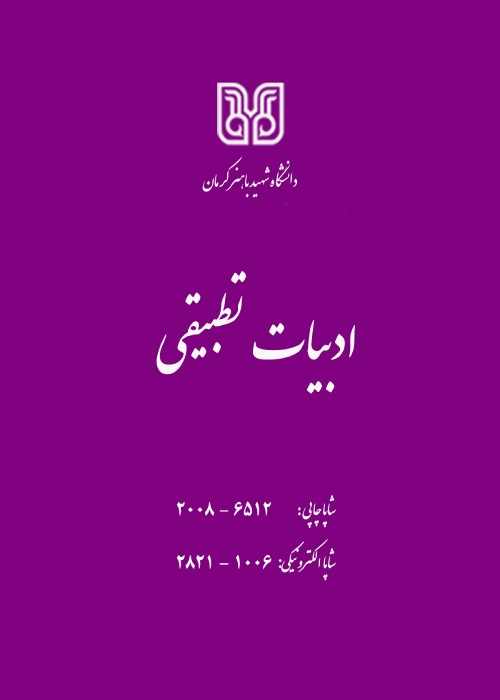A Comparative Study of Hamze Nameh and Hamzat-il-Bahlavan Origin, main character, content and type
Stories have a large readership and are of high significance in folklore studies. Therefore, studies addressing them carry relevance not only to folklore studies but also to different fields of study such as anthropology, cultural studies and sociology. One of the well-known and popular folklore stories is Amir-al-Muminin Hamzeh. Although a few studies have been conducted on it, they are open to criticisms on several grounds. One such criticism is that the Arabic root or origin of story is overlooked except in an Arabic paper by Mustafa Al-bakur (1386) and in ‘Iran’s Folklore’ (…… 2009). Others (e.g., Farrokhi, 1389) have either taken the root as Iranian or have not touched upon the issue (e.g., Zargoush, 1389). Such a negligence and inconsistency has resulted in ambiguities, confusions, controversies and sweeping generalizations. The relationship between Farsi and Arabic versions of this story is something beyond a mere from-Arabic-to-Farsi translation. Consequently, it is necessary to take into consideration the cultural exchange of Iranian people with their southern and western neighbors. Additionally, it is equally essential and useful to compare Iranian and Arabic folklore (Adab-al-Shaabi). Both were taken into account in the current study.
This research is descriptive in nature. For the purposes of this study, Arabic (four volumes) and Farsi (two volumes) versions of Hamzat-il-Bahlavan were studied. As a library research, works and research studies addressing Arabic Folklore (Adab-al-Shaabi) were also included.
Findings of this study indicate that the Farsi Hamzeh-Nameh is in fact an Arabic story; it is neither Indian nor Iranian. Despite its Arabic origin, there are historical documents suggesting that Arab storytellers have been affected by Iranian epics. More specifically, stories about Iranian hero, Rostam, have been transferred by Arab storytellers into Hamzat-il-Bahlavan. Interestingly enough, Hamzat-al-Arab is the Arabic hero for Iranian Rostam. It was also found that in Farsi translation, the main character (i.e. Hamzat-al-Arab) has been changed into a religious one. In other words, the main Arab character in the Arabic version has been replaced by another character—a religious one; Hamzat-al-Arab has been replaced by Amir-al-Muminin Hamzeh. The latter character is Prophet Muhammad’s uncle. The rationale for this change is racial. Since the original Arab hero (i.e. Hamzat-al-Arab) defeats Iran’s king in a battle, it would be less humiliating and offensive to depict Amir-al-Muminin Hamzeh as the winner since he is the uncle of the Holy Prophet. In other words, Amir-al-Muminin Hamzeh’s affiliation to Prophet Muhammad—the holiest man for Muslim Iranians— makes this defeat less humiliating to the Iranian reader. Arabic and Farsi resources, materials and texts revealed that it is futile to look for the creator(s) or writer(s) of this work. It is the content, according to an old eastern tradition, that matters most. Findings are used to argue that Hamzeh-Nameh or even Hamzat-al-Arab is a folklore story of a hero only. Hamzat-il-Bahlavan, in fact, is a work of Arab supremacism against Iranians.
In this study, it was concluded that unlike the perception of many Iranians, Hamazeh-Nameh is Arabic in its root and origin even though it has been under the influence of Iranian epics. When getting translated from Arabic to Farsi, several important changes pertaining to characters and events have been intentionally made to it. This story is not a religious or historical epic; rather, it is a folklore of a hero.
- حق عضویت دریافتی صرف حمایت از نشریات عضو و نگهداری، تکمیل و توسعه مگیران میشود.
- پرداخت حق اشتراک و دانلود مقالات اجازه بازنشر آن در سایر رسانههای چاپی و دیجیتال را به کاربر نمیدهد.


